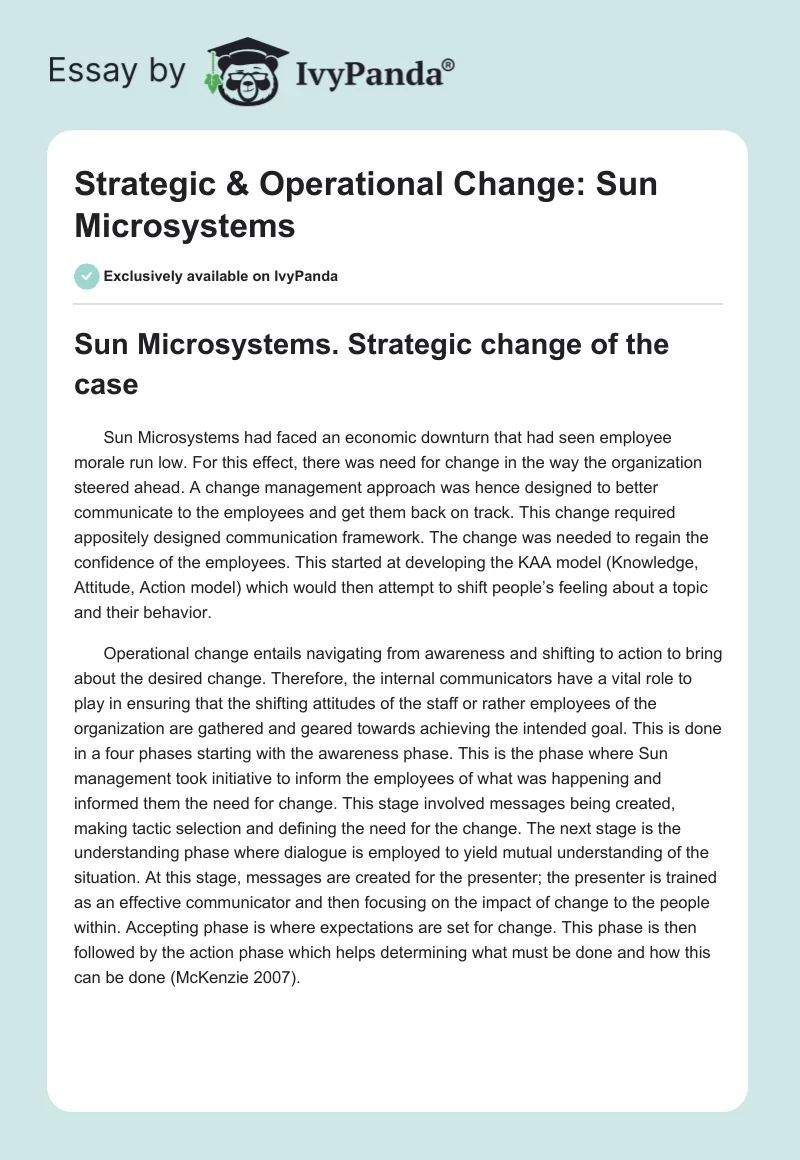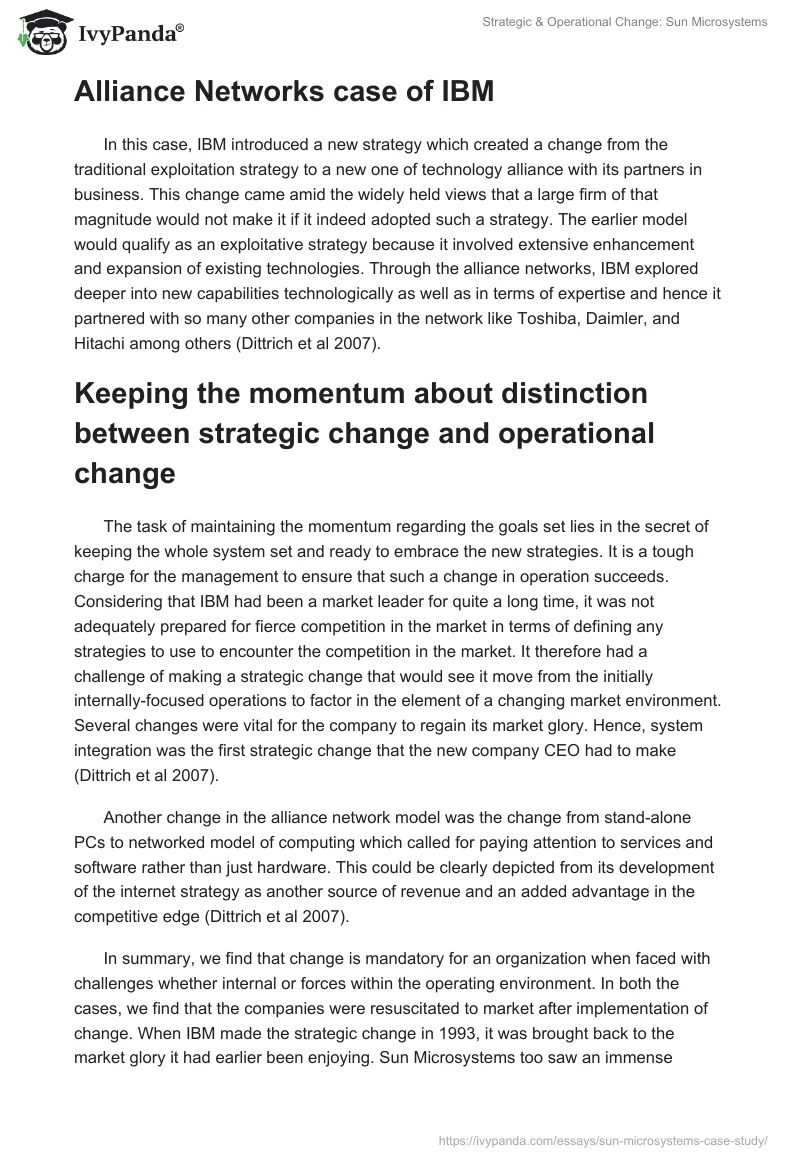Sun Microsystems. Strategic change of the case
Sun Microsystems had faced an economic downturn that had seen employee morale run low. For this effect, there was need for change in the way the organization steered ahead. A change management approach was hence designed to better communicate to the employees and get them back on track. This change required appositely designed communication framework. The change was needed to regain the confidence of the employees. This started at developing the KAA model (Knowledge, Attitude, Action model) which would then attempt to shift people’s feeling about a topic and their behavior.
Operational change entails navigating from awareness and shifting to action to bring about the desired change. Therefore, the internal communicators have a vital role to play in ensuring that the shifting attitudes of the staff or rather employees of the organization are gathered and geared towards achieving the intended goal. This is done in a four phases starting with the awareness phase. This is the phase where Sun management took initiative to inform the employees of what was happening and informed them the need for change. This stage involved messages being created, making tactic selection and defining the need for the change. The next stage is the understanding phase where dialogue is employed to yield mutual understanding of the situation. At this stage, messages are created for the presenter; the presenter is trained as an effective communicator and then focusing on the impact of change to the people within. Accepting phase is where expectations are set for change. This phase is then followed by the action phase which helps determining what must be done and how this can be done (McKenzie 2007).
Alliance Networks case of IBM
In this case, IBM introduced a new strategy which created a change from the traditional exploitation strategy to a new one of technology alliance with its partners in business. This change came amid the widely held views that a large firm of that magnitude would not make it if it indeed adopted such a strategy. The earlier model would qualify as an exploitative strategy because it involved extensive enhancement and expansion of existing technologies. Through the alliance networks, IBM explored deeper into new capabilities technologically as well as in terms of expertise and hence it partnered with so many other companies in the network like Toshiba, Daimler, and Hitachi among others (Dittrich et al 2007).
Keeping the momentum about distinction between strategic change and operational change
The task of maintaining the momentum regarding the goals set lies in the secret of keeping the whole system set and ready to embrace the new strategies. It is a tough charge for the management to ensure that such a change in operation succeeds. Considering that IBM had been a market leader for quite a long time, it was not adequately prepared for fierce competition in the market in terms of defining any strategies to use to encounter the competition in the market. It therefore had a challenge of making a strategic change that would see it move from the initially internally-focused operations to factor in the element of a changing market environment. Several changes were vital for the company to regain its market glory. Hence, system integration was the first strategic change that the new company CEO had to make (Dittrich et al 2007).
Another change in the alliance network model was the change from stand-alone PCs to networked model of computing which called for paying attention to services and software rather than just hardware. This could be clearly depicted from its development of the internet strategy as another source of revenue and an added advantage in the competitive edge (Dittrich et al 2007).
In summary, we find that change is mandatory for an organization when faced with challenges whether internal or forces within the operating environment. In both the cases, we find that the companies were resuscitated to market after implementation of change. When IBM made the strategic change in 1993, it was brought back to the market glory it had earlier been enjoying. Sun Microsystems too saw an immense recovery after the implementation of the management approach to employee communication.
Reference
McKenzie T., (2007) “Applying a change management process to employee communication” Melcrum Publishing Ltd.; 14- 17.
Dittrich, K., Duysters, G., and Ard-Pieter de Mand, (2007) “Strategic repositioning by means of alliance networks: The case of IBM”.


